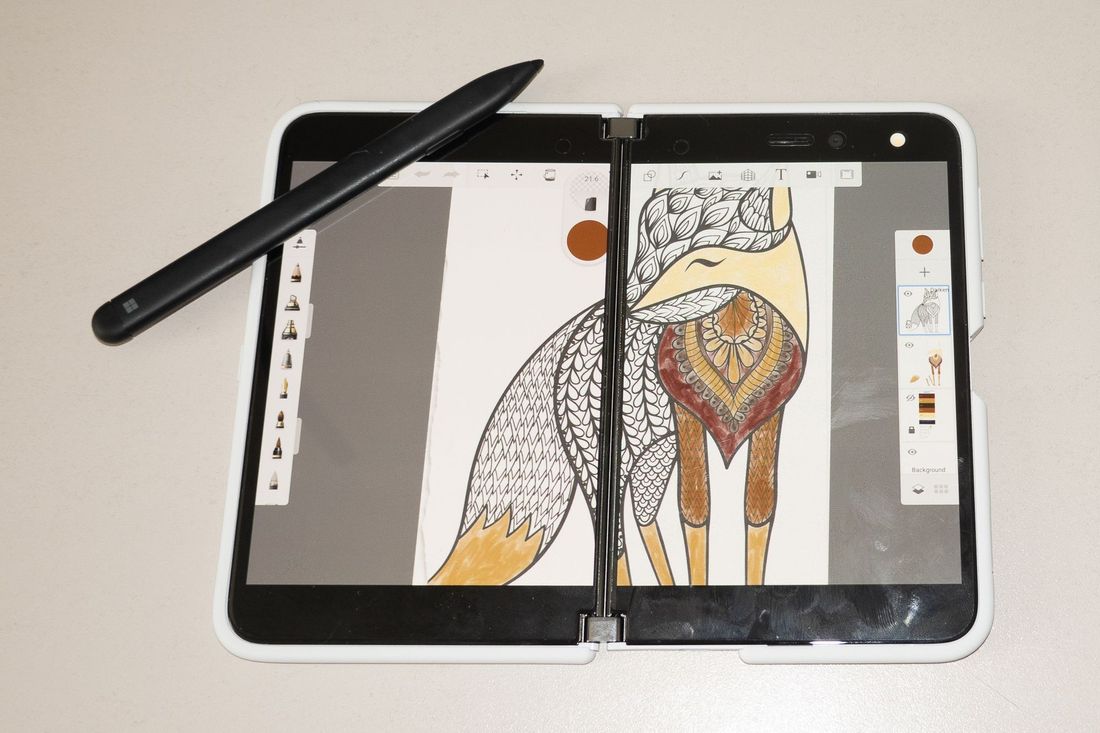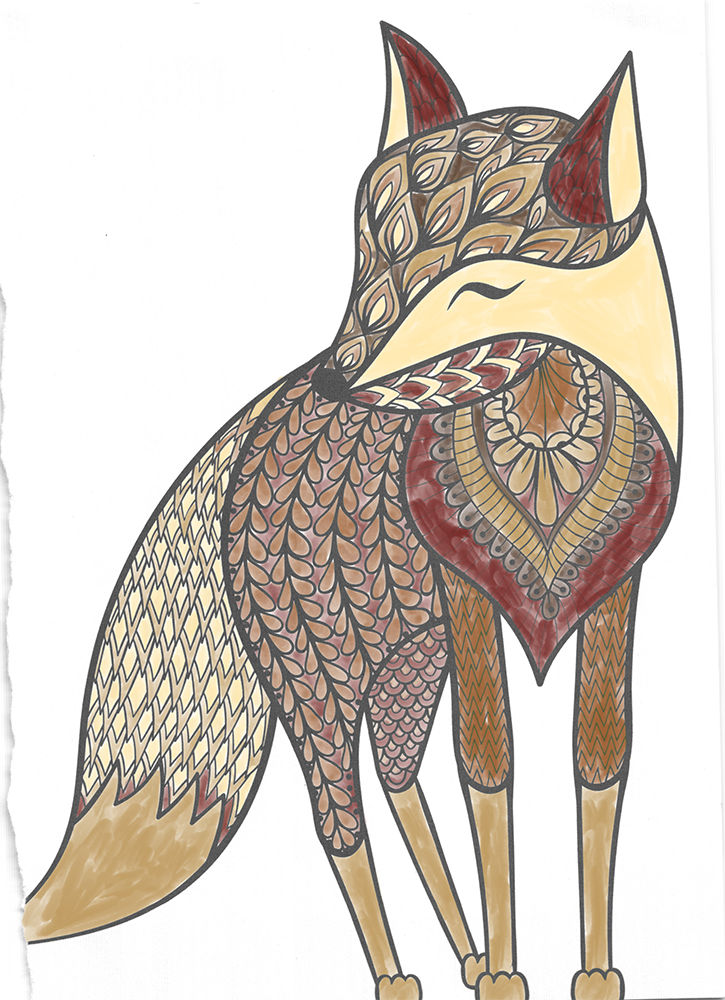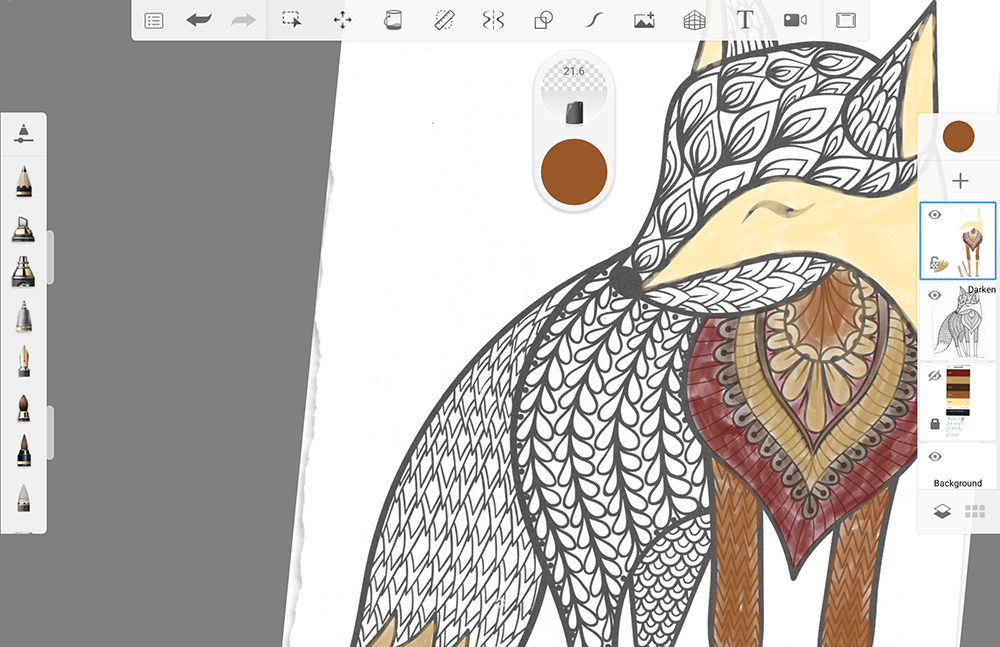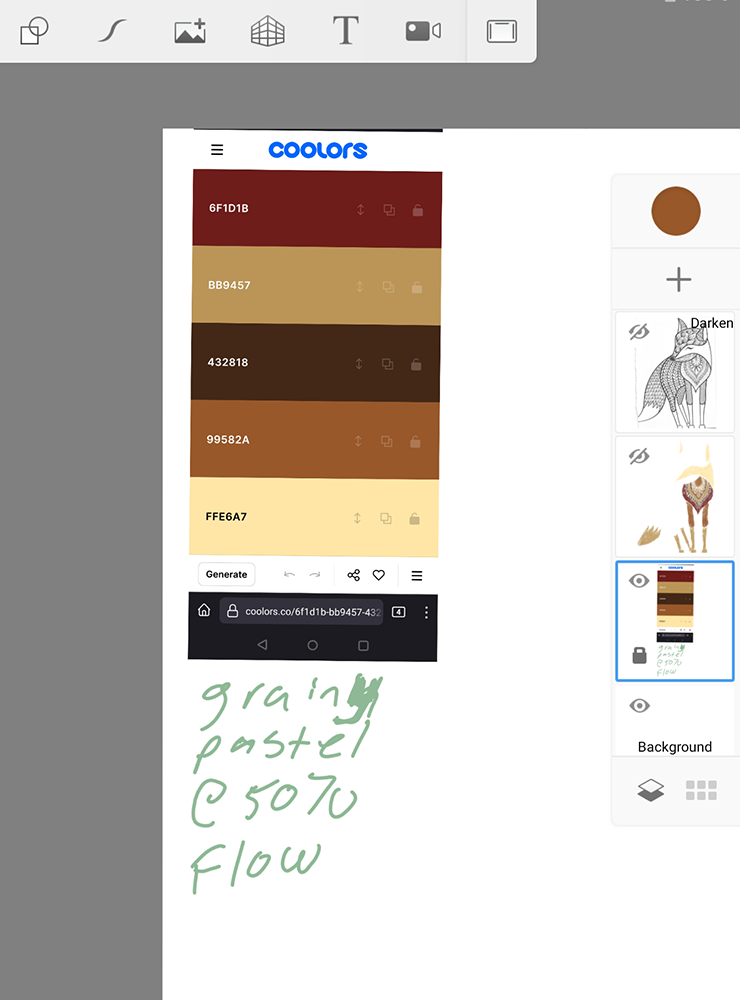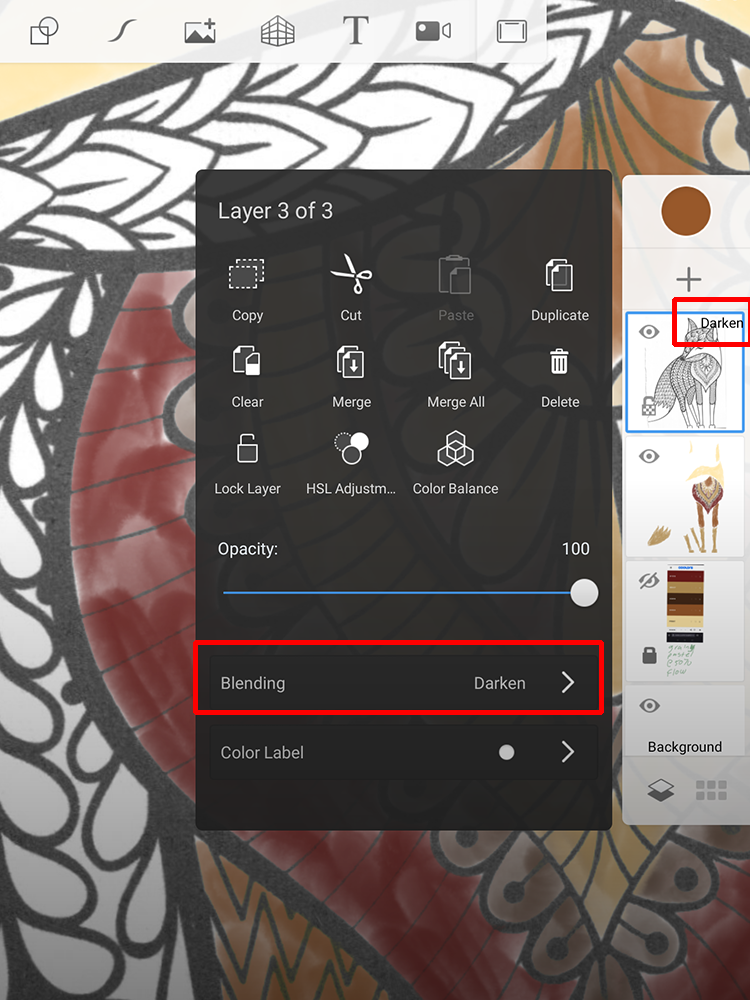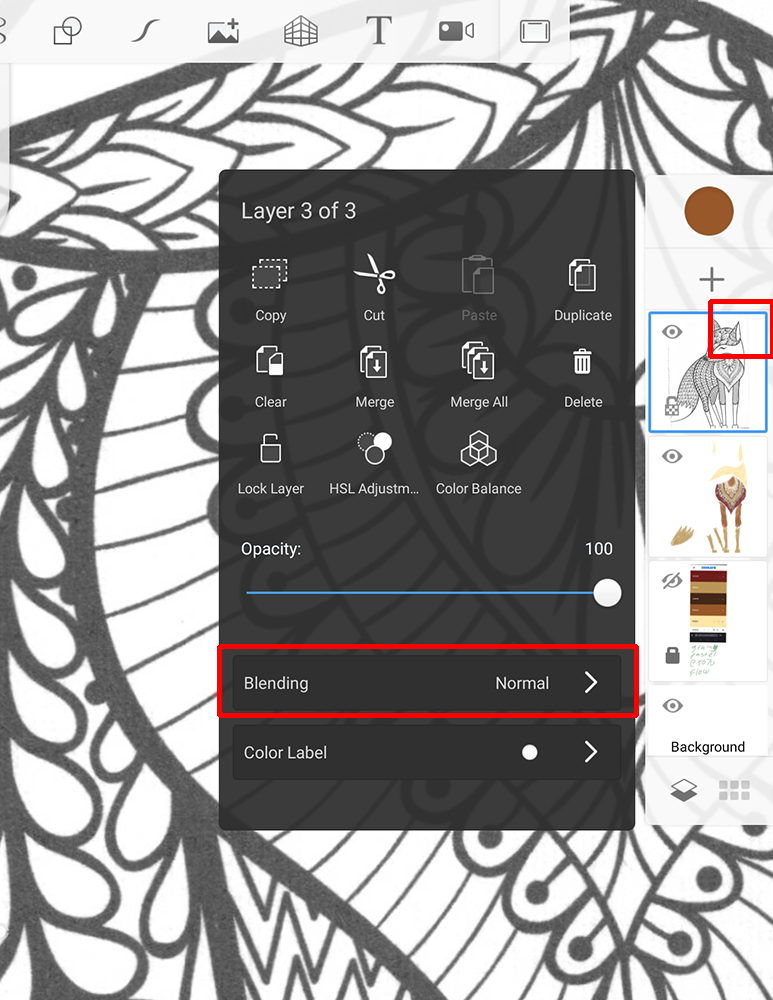Table of Contents
Changelog
- 2025-03-03
- Remove ‘Drawing’ from page in favor of a dedicated ‘Digital Drawing’ page. This page is now only about digital coloring. Also rewrote portions to be more topical and reflect my current setup(s).
Going Digital
Given I gave up on Analog coloring and drawing due to health and living space needs, I figured it was time to really commit to figuring out digital for coloring and drawing. Note I intentionally avoided making desktop or laptop computers a requirement for my setup. I want to have this whenever/wherever in it’s simplest form.
After some research into digital coloring and drawing I nearly walked away completely. Digital is a messy land of choices. Much like Analog there are a ton of options and you can go wrong, you can go right and everywhere in between.
Unlike Analog, there is no ’the humble pencil and paper’ to fall back upon if you get overwhelmed. Thankfully I’m a stubborn human at times and found a good blend of options that get close to pencil/paper for simplicity and utility.
What
The below will outline what I’ve managed to put togther for myself that works well, gets out of my way (read: simple) and works with my finger or a ‘real stylus’. Basically the equivalent of pencil/paper that can get fancy if you desire. However, much like pencil/paper you don’t need to dive deep to succeed.
The intent here isn’t to become an artist using an iDevice living the Coffee Shop Life. It’s to make coloring easy and more accessible. Ideally in a way that scales to match the moments desires.
See the Complete Coloring Page screen shot for a complete coloring page of mine.
Requirements
The only hard requirement for this setup is Sketchbook (link) or Krita (link) from your preferred app store.
These apps were the key to unlocking digital coloring for me. They are available on iOS and Android for both phones and tablets. The interfaces are clean and despite having all kinds of tools available. Don’t let the feature list overwhelm you, you won’t need many features and can safely ignore the vast majority of them.
For more detail on how I use these apps, see the Approach section below.
Sketchbook
The Sketchbook app itself is a simple looking drawing app (see screenshots below) but it has pretty much all standard tools like image import, multiple brushes, full color palatte, eye dropper, layers and more that are built into drawing apps these days. The website has a good FAQ and breakdown of features. I’ll leave the devs to showcase the apps features.
Sketchbook is very accessible and I strongly recommend giving it a try first.
Krita
For more advanced users and tablet users, Krita is available. I personally prefer Krita as it has more advanced features around brushes and workflows compared to Sketchbook.
HOWEVER
Krita has a steeper learning curve than Sketchbook. My approach to coloring with Krita matches Sketchbook for image setup and high level workflow. Sketchbook is 100% valid and I still recommend it over Krita for all but power and advanced users.
See the Digital Drawing page for more information on how I’ve setup Krita.
Nice To Have
A stylus is a nice to have for this setup. I myself use an active stylus with a folding phone as my main hardware. I also use an Adonit Dash with my non folding phone when I don’t have my folding phone handy. Note a stylus is not a requirement but can make/break the feel of the setup for some.
There are basically 3 options here:
Device stylus
- Common Options: Apple Pencil / Surface Pen / S-Pen
- Pros
- Best precision of the stylus options
- Allows for finger/palm rejection to be setup in some apps
- Cons
- Requires device support
- Usually battery powered and require charging
Active stylus
- Common Option: Adonit Dash (link)
- Pros
- More precise than standard stylus
- Does not require device support
- Cons
- Battery powered and requires charging
- Less precise than device stylus
Standard Stylus
- Common Options: Adonit Jot / Adonit Mini (link) / Rubber nub stylus
- Pros
- More precise than finger
- Does not require device support
- No battery
- Cons
- Less precise than active stylus
- May be harder to see where you’re coloring/drawing
In My Opinion…
Each stylus has its own pros and cons. I myself prefer the device stylus option over others but use an Adonit Dash if no device stylus is avilable.
Each option is valid and can make a big difference for how coloring and drawing using a digital device feels. I definitely couldn’t use my finger as the primary way to color a picture. I need a bit more ’traditional’ feel but others I know prefer their finger.
Approach
My approach to coloring with Sketchbook and Krita is simple but powerful. The key to the setup is having 4 layers, including the background.
Note: you can import your coloring page and just start coloring, nothing wrong with that. The below unlocked a lot of utility for me and some others I know. The approach below can make a very large difference for how the digital coloring and drawing experience feels.
Pan/Zoom/Rotate
In general I make heavy use of pan, zoom and rotate. I can use two fingers for moving around my focus easily and fluidly without putting down my stylus. It took a little practice but made a big difference for me.
Color Palate
For choosing a color palate I generally use Coolors (link) to generate a random color palate. I highly recommend this site if you don’t want to build your own set of colors.
One trick with the site that I found really interesting: there is a little lock on each color shown on the generator output page. If you select the lock it’ll lock the color so you can generate another palatte with that color as included. You can do this multiple times. Can be helpful for quickly finding complimentary colors to one that stands about above others.
I normally stick to a maximum of 5 colors for my images but that’s a personal preference. This is art: let the mood strike.
I’ve also saved some of my favorite options from Coolors as Krita palettes for re-use in multiple images.
Brushes
I personally prefer charcoal and pencil brushes in general. However, options like paint, pen, others are available if you use the layering approach I describe in the Layers section to retain the image detail.
If you’re not sure go with a pencil/marker brush and see how it feels. This may take a little time to sort as you find your preferences.
Layers
I chop up my coloring pages into multiple layers. This is due to me wanting to keep the detal work above the coloring and shading without having to go back to cleanup when done coloring/shading. I’ve also worked on multiple images at the same time and try to keep some additional info ‘handy’ in case I don’t work on an image for a longer period of time.
This approach works really well for flexibility while not being too complex overall.
That said: this works for me and others I’ve talked to. Your mileage may vary.
Layer 1
I setup the upper most layer as the coloring page / main drawing outline using the image import tool. I also set the blend mode to Darken. This lets me see the coloring page (or drawing) details above any colors or shading I add to the image.
This also lets me ignore the white background most coloring page PDF and image files have. By using Darken for blending, the white image background has no effect on the final image and essentially becomes transparent.
See Blending - Darken and Blending - Normal screenshots below for how this works and can be setup.
Layer 2
I setup the 2nd highest layer to be coloring / shading. This is where I do all my coloring work in particular. By doing this on a layer separate from the main coloring page I can use opaque brushes (like paint ones) that would obscure a lot of the coloring page detail or my own drawings details.
Isolating my shading and color as a dedicated layer really helped me with some of the brush types like pens and paint brushes.
See the In Progress Coloring Page screenshot for an idea how this will look as you work.
Layer 3
I setup the 3rd highest layer to be notes and other information I want handy but not part of the final image. This includes my color pallate, brush notes and more. I keep this in my image for when I’m working but set the layer to invisible when exporting.
This is really helpful as I can now bounce between images as the mood may strike and not lose all the information I need to pickup where I left off.
See the Palate Layer screenshot for how I have this setup in my images.
Background Layer
I usually have a background layer set to White. Feel free to adjust as you desire.
Sourcing Coloring Pages
If you’re looking for coloring pages both Patreon and Etsy have a lot of options available.
I’ve not had much of a problem finding pages via Patreon, Etsy and Google. I’ve even subscribed to a few patreon accounts to get regular updates from artists I like in the past.
See the Convert PDF Coloring Pages page for information on how to convert PDF files into coloring pages. Also note: I’ve not found a good way to use just Sketchbook for converting coloring pages from PDF. The linked page has additional information that should help.
Conclusion
I feel like I need a conclusion here. The above is what I use for digital coloring and drawing as well as some general info I’ve collected over time.
A number of humans I know have run with this and had success.
Hopefully you can do the same.
